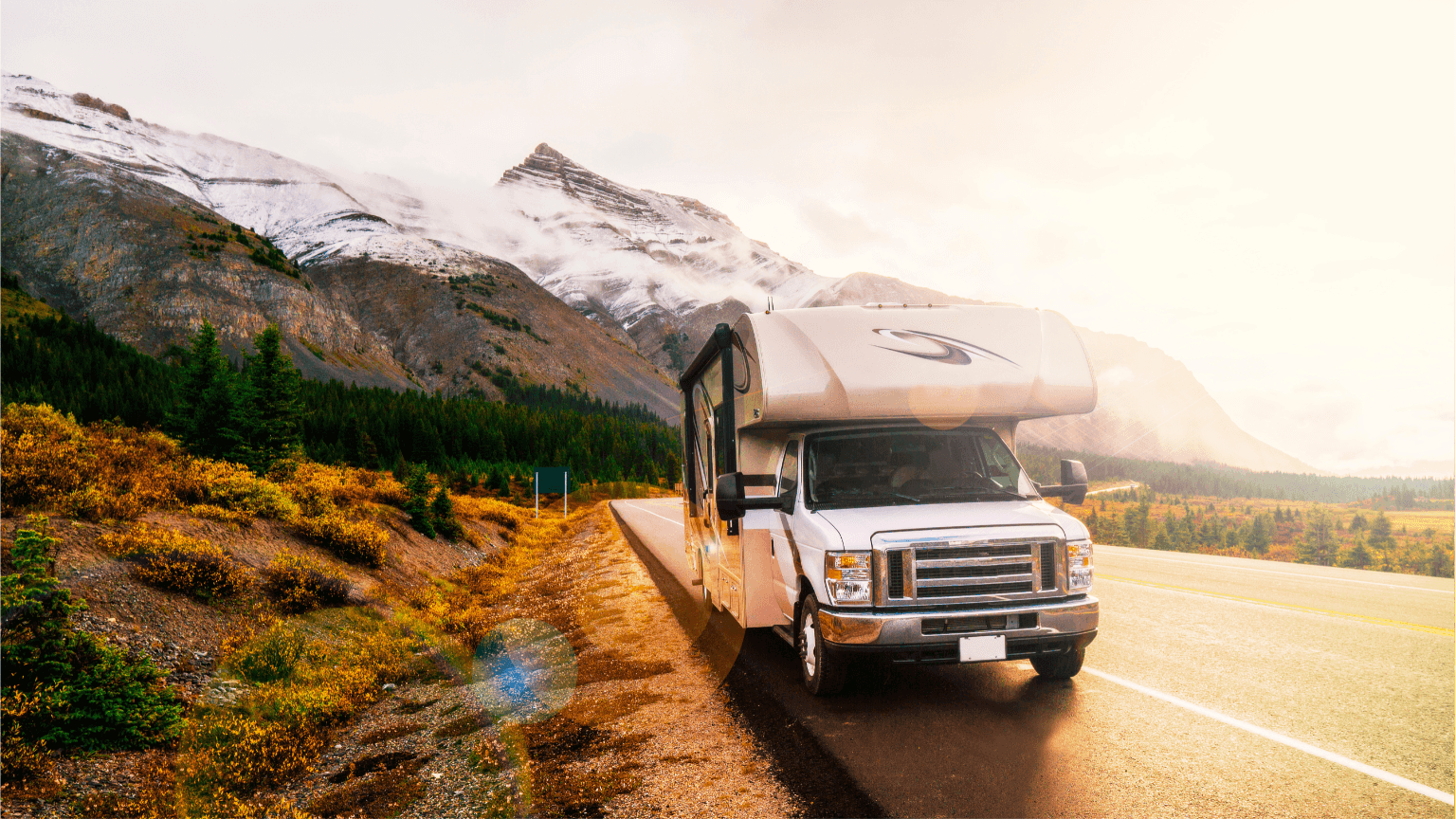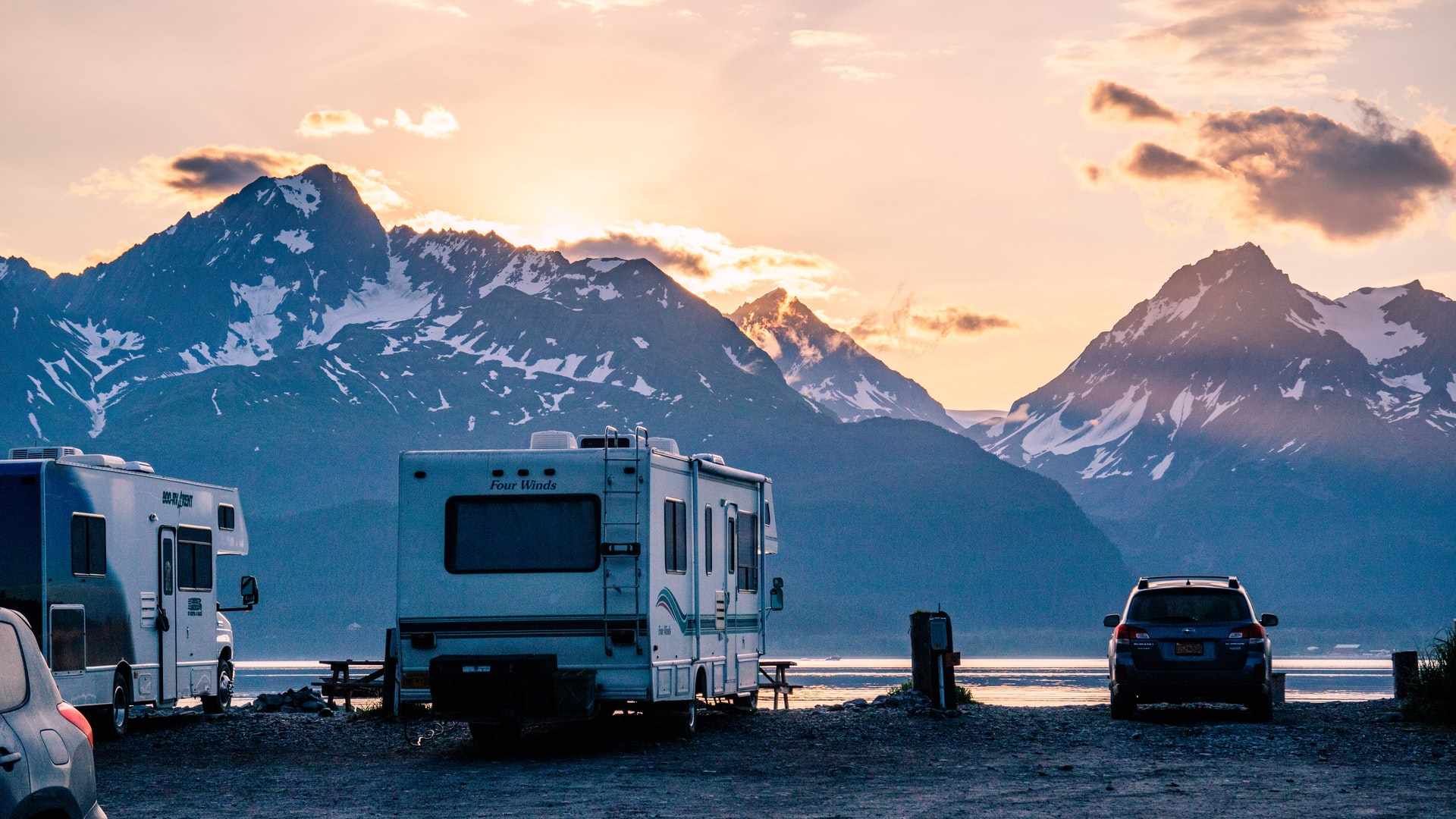Few things say camping like kicking back and unwinding by a crackling campfire. Gathering around the dancing flames, feeling the warm glow, engaging in long conversations, watching the stars, and making campsite favorites on the fire are the cornerstones of an evening at camp. But getting the fire started isn’t always easy, especially if you are new to the camping scene. Luckily, we’ve got some campfire tips and tricks to help you light your flame and keep it lit.
RVs For Rent Near You
Campfire tip #1: Have a basic understanding of fire
To manage a fire well, you want to understand how it works. Fire is a chemical reaction between the wood you burn and the oxygen in the air. This means your fire needs to breathe. Generally, hot air rises, so your fire wants to suck in fresh air from the bottom of the fire and spit smoke up into the air. When you build or adjust your fire, keep this in mind and be sure the fresh air has somewhere to come in at the bottom and the smoke somewhere to go up. You also need space between the pieces of wood. If you want to turbo-charge your fire, you can blow fresh air in at the base of the flames.
There are several ways to build your campfire, but one of the most effective is the “log cabin” method. You start with two parallel logs, then lay two more on those the opposite way— like a tic-tac-toe board. Then two more on top of that like the first. The wood on top should be smaller as you go up and somewhat pyramid-shaped. The starter goes into the middle of this with enough kindling to get things going, but not so much as to impede airflow.
Check out this great video from REI that explains how to construct the perfect wood structure for burning.
Campfire tip #2: Test the firewood
Water and moisture are a fire’s worst enemy. You want your firewood to be dry. The dryer it is, the better it will burn. It can be hard to get a fire started with wet wood if you can get one started at all. If you’re bringing wood from home, make sure it’s been covered or has plenty of time to dry since it last got wet. If you’re buying firewood or aren’t sure if what you have is dry, you can check it using the following tried and true methods.
- Sight: You want to see cracks in the ends, and clean wood is likely dryer. Mold or mildew is a very bad sign. The bark should be easy to separate from the wood.
- Touch: It should feel dry and hard and relatively light.
- Sound: If you smack two pieces together, they should have a high ringing tone rather than a dull thud. Note that this doesn’t work well below freezing.
- Smell: The longer wood dries, the less “tree” smell it will have. As the resins dry, they are less aromatic.
- Science: If you like gadgets, get a moisture meter like this one. You want wood with less than 18% moisture, and the lower, the better.
Getting the right wood is key to the perfect fire. Always be sure to check the firewood rules of your campsite or park. Some campsites prohibit you from collecting wood. Others will prohibit you from bringing in outside wood for fear of introducing invasive pests or diseases.

Campfire tip #3: Choose the right fire starter
Most people want to get their campfire lit quickly and reliably. You can find fire starters and different tinder forms at most outdoor stores, but sometimes you just have to use what you have on hand. There are a few techniques that work great for starting wood fires. Many people have methods that they swear by, so don’t be afraid to experiment and see what works best for you. Here are a few favorites.
- Take a section of a paper towel and add about two tablespoons of cooking oil to it. This should be enough to make it damp with the oil but not dripping. You might want to do this in a small bowl or a ziplock bag. With the bag, you can store the fire starter for later use or make a few at a time. A crumpled ball shape is best for the paper towel.
- Dip cotton balls in paraffin wax or vaseline and store them in a baggie.
- If you don’t want to deal with sticky or oily substances, you can use dryer lint. Anytime you do laundry, store the lint in a baggie. Don’t forget to pack it when you go camping!
Just use one of these fire starters in place of tinder. Light it with a match or a lighter wand. It catches quickly and burns hot for a good length of time with significant flames. It is the oil that is burning initially, with the paper towel acting like a big candlewick. I find it very reliable, and I almost always have the materials on hand for it without needing to plan to bring anything specifically for starting fires.
Campfire tip #4: Keep smoke out of your face
No one is a fan of getting smoke in their face, but unfortunately, your options for controlling smoke are limited. A rule of thumb is that the hotter the fire, the less smoke you will have. Dryer wood and good circulation are the keys to a nice, hot fire. Hardwoods also burn cleaner than lighter woods, and the less bark and debris you have in your fire, the better.
When there’s a steady wind, the obvious move is to sit upwind of the fire. If the wind is moving around, the lower and further you are from the fire, the less likely you will get a face full of smoke. If you are too close to a fire and standing or sitting high over it, you may get smoke no matter the wind direction. As the wind passes around you, it naturally creates a zone of low pressure, which will draw the smoke towards you. If this happens, then you want to get further away from the fire. Finally, you can make a sort of decoy to attract the smoke. A very large log or tall stone near the fire will create a similar effect and pull the smoke to some degree.

Campfire tip #5: Choose your open-fire meals carefully
This is a huge subject in and of itself— and a divisive one at that. Some love cooking on the open fire. Others prefer using coals and a dutch oven as the best means to cook outside. I personally love coals and dutch ovens. Coals provide long-lasting even heat. I suggest pre-cooking anything you want to roast on the open flames. Because you can’t control the heat well, if it is pre-cooked, you needn’t worry much about under or overcooking. You just want to get it heated up and toasted a bit. And when roasting over the fire, try to position your food near the hottest coals rather than in flames. You will get more cooking and less burning.
If you do want to truly cook on an open fire, make sure you involve water somehow. The reason is that water will boil off as it heats up, regulating the temperature nicely. This prevents things from getting burnt, even when the fire is scorching hot. If the fire goes down, the water keeps cooking for a while as it retains heat. Thus boiling and sautéing are good techniques. Using cooking oil to fry things on an open flame is a bad idea. This can easily create an uncontrolled flare-up and get you hurt. If you want to fry things, use a proper camp stove.
The final tip here is to do the prep ahead of time. It’s not too hard to cook outdoors, but cutting, cleaning, and otherwise prepping is easier in a kitchen, or somewhere you have running water. This also makes it easier to cook in the dark of the evening.
Campfire tip #6: Invest in some fire gloves
Sometimes you want to rearrange your fire or add some logs in just the right spot. Having a pair of heat-resistant gloves can be super handy for this. If you are quick about it, you can pick up a flaming log and reposition it with no chance of being burned. And they are nice and grippy so you can move things exactly so instead of haphazardly shoving things around with a stick. And they are just as good as oven mitts for working with hot cookware. Just make sure you are not wearing a loose shirt and be mindful of your hair if it is long.
Campfire tip #7: Follow the rules
Always, always, always follow the rules of the campsite you are in. Respect burning bans, use any provided fire pits, and never leave a fire unattended. Put out your fires thoroughly before you retire for the night and clean up after yourself when you leave. If you are in the backcountry, be absolutely mindful of brush fire potential. Build a fire cairn or pit and make sure there is nothing nearby that will go up in flames with a spark.
Gather ’round the campfire
By following these simple tips, you’ll have that fire blazing in no time! Grab your marshmallows, graham crackers, and chocolate, and get ready for some fun memories.









